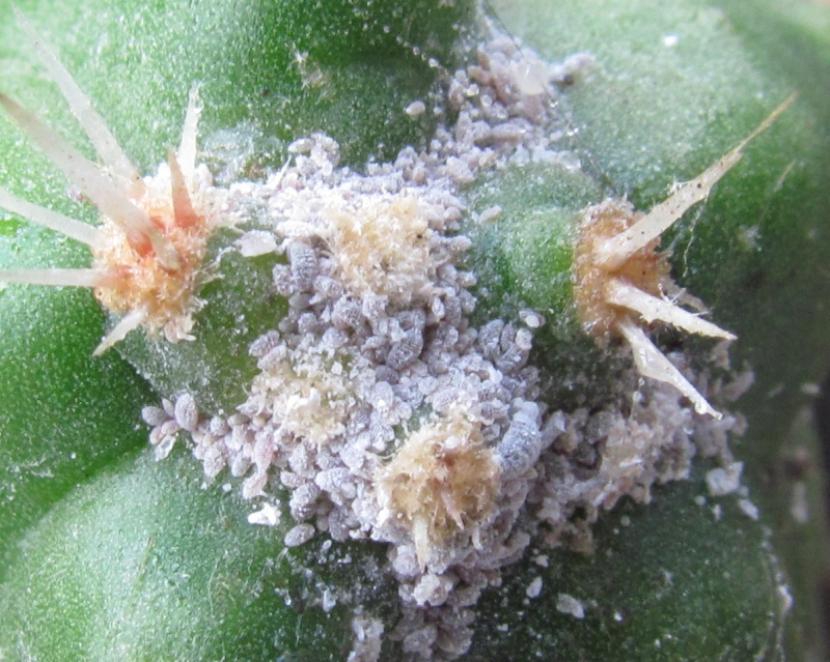
Image - Cactuseros.com
Cacti are plants that are generally very easy to care for. But if we live in an area where environmental humidity is low during the hottest season, it is most likely that they become very vulnerable to the attack of mealybugs.
These parasites, visible to the naked eye, can cause a lot of damage to them. Thus, it is very important that we know how to eliminate mealybugs from cacti, both with ecological and chemical remedies.
What are mealybugs?
Mealybugs, also known as coccids, shells, scales, shells, piglets or shells, are some very small insects that have a protective shield of different colors and consistencies, depending on which species it belongs to.
They are one of the most common pests in plants and, above all, in cacti that are not receiving all the care they need. When noticing them weak, they immediately adhere to them and begin to feed on the sap, part of which many of them will excrete as a sugary liquid (molasses) that attracts the black fungus and aphids.
There may be more than one generation a year. First, the egg hatches, a larva emerging from it; it becomes an adult and lays eggs, thus repeating the cycle until temperatures are too low.
Types of mealybugs that most affect cacti
There are above all two that we can see a lot in temperate regions. Are:
Cottony mealybug
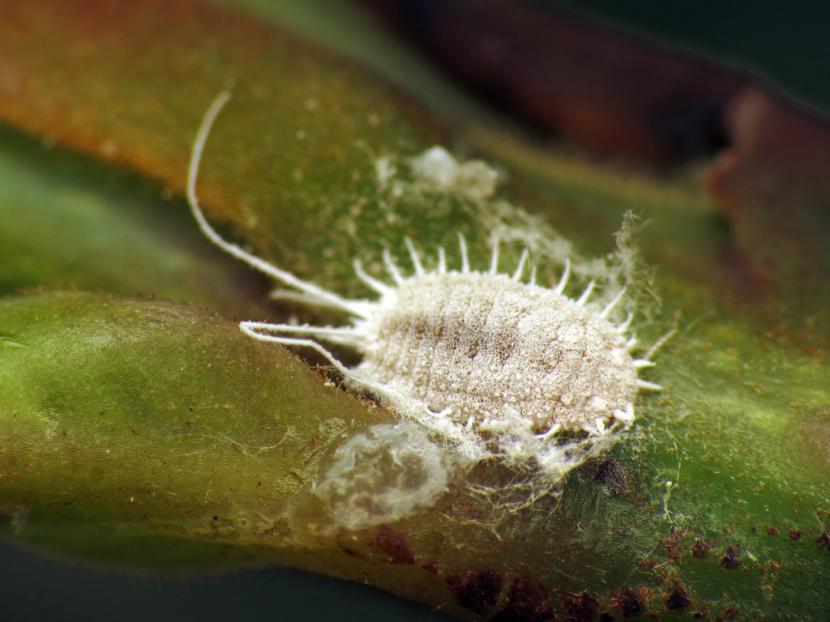
Called cotonet in Catalan and botanically known as Pseudococcus, It measures no more than 1cm and has a cottony texture. It can be seen in the areolas but also between the ribs of the cactus.
Cottony root mealybug
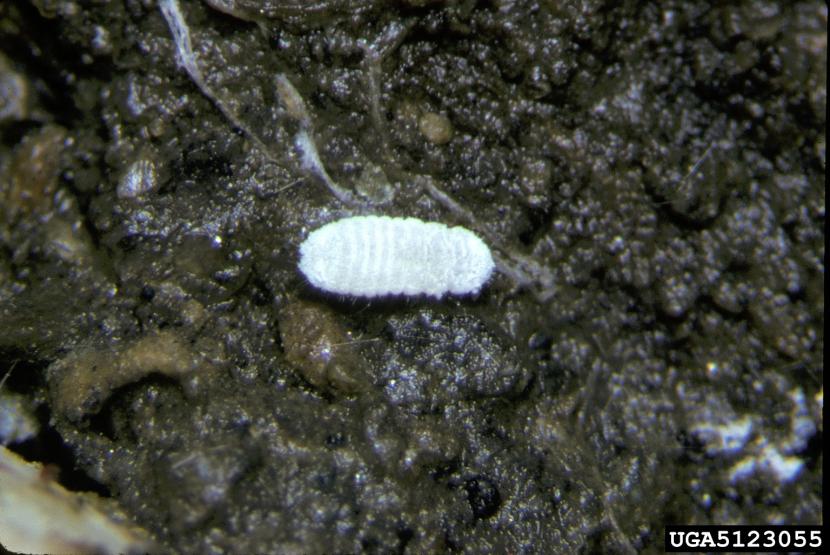
Image - Forestryimages.org
Known by the scientific name Rhizoecus sp, they are mealybugs that parasitize the roots. The only way to detect them is by extracting the plant from the pot or from the ground to see how its root system is doing.
California louse
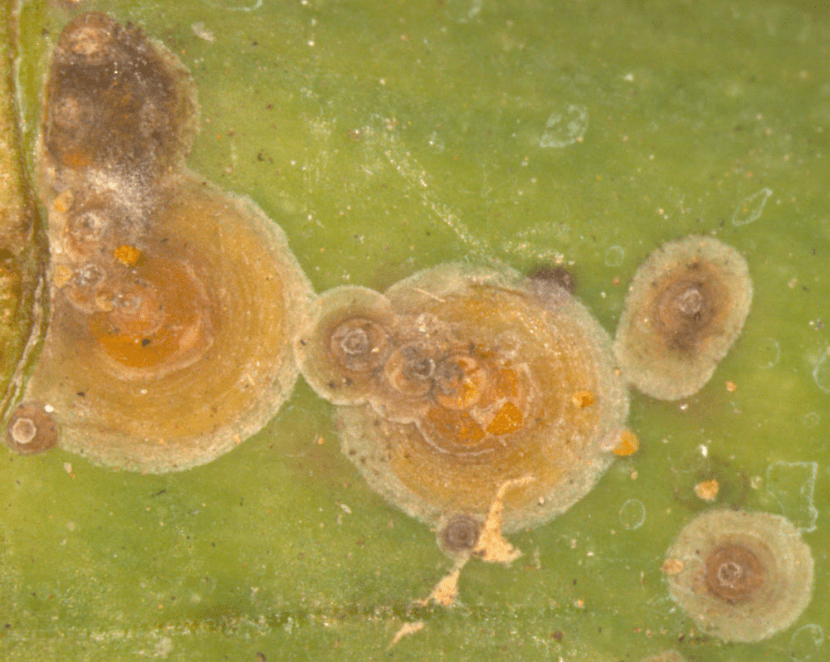
Image - nbair.res.in
Or California red louse. Its scientific name is Aonidiella aurantii. They are more or less rounded in shape, with a dark reddish-brown coat of arms.
What are the symptoms and damage they produce?
We can know if our cactus has a plague of mealybugs if:
- We see the insects themselves.
- Discolored spots appear.
- Due to the presence of the Negrilla fungus.
The damages they produce are deformations on the body of the cactus from bites. Unfortunately, if the damage is severe, the plant will not regain its normal state.
How to eliminate mealybugs from cacti?
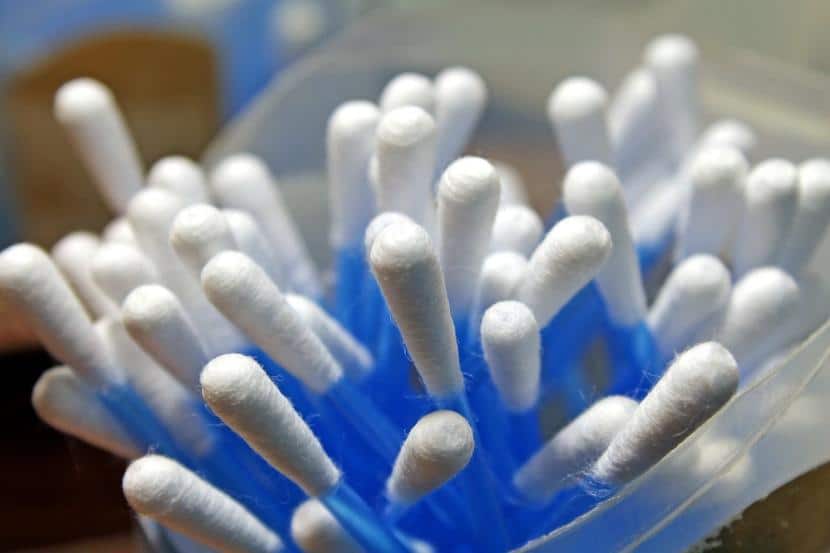
Home remedies
There are several remedies that we can use:
- Remove the mealybugs with an ear swab or a small brush simply moistened with water.
- Dissolve a small spoonful of soap and another of burning alcohol in a liter of water, and then apply with a brush.
- Throw in some ladybugs, which will eat the mealybugs.
- In case of having bold, it is highly advisable to treat the cactus with natural fungicides such as Copper oxychloride.
Chemical remedies
If the plague is widespread, use of cochineal insecticide that we will find for sale in any nursery or garden center.
I hope that from now on you know how to control and eliminate mealybugs from your cacti 🙂. When in doubt, don't hesitate to ask.

Hello, I am in love with cacti just like you, I have a small collection and in recent times part of the collection has been affected by cochineal and the bold fungus, especially the opuntias and part of the mamillarias, I chose to eliminate them from The collection to the most affected, I will try your advice on the copies that I still have and are sick. If you know of other caceros remedies please publish them, that the pesticides are not within my reach. Thank you.
Hi Marilin.
For the bold, sprinkle copper over the plants, in spring or fall. Do not do in summer as they could burn.
Greetings.
Hello, I am a new fan of cacti and I am very worried about my first plant, they gave it to me two years ago and this spring it has finally put flowers, however, lately I have seen some small white things that have grown in a few days. I went to the nursery and they gave me a fungicide, however, my cactus is still the same, I don't know if it will be a cottony mealybug or just another parasite, I'm going to upload photos to see if you can help me. Millions of thanks
Hi Estefania.
If they have a cottony feel and are easily removed by hand, brush or etc., it is cochineal.
You can remove them like this, with a brush for example soaked in pharmacy alcohol, or with an anti-mealybug.
A greeting.
With cotton wool, you cannot lower your Guard, it is a continuous fight, I used potassium soap, I prefer natural products, now I started using diatomaceous earth, I put on the ground and pulverized too, they are very difficult to remove
Hello Maria.
Yes, I totally agree. The mealybug is one of those pests that you have to deal with year after year. But diatomaceous earth turns out to be quite effective.
Regards!
How often should I spray with the alcohol?
Hello Maria.
Once a day for a week.
Anyway, if you can get diatomaceous earth, it is almost better, since you only pour it once over the cactus and the next day it does not have any mealybugs, or very few.
Regards!